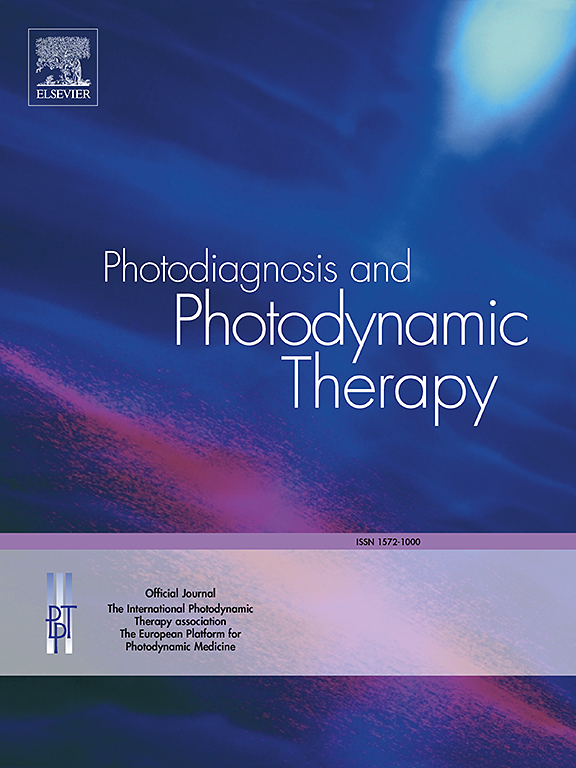Generational shift for clinical application of the QLF system for evaluating tooth wear
IF 3.1
3区 医学
Q2 ONCOLOGY
引用次数: 0
Abstract
Background
No study has quantitatively assessed tooth wear using a clinical quantitative light-induced fluorescence (QLF) system. This study aimed to compare fluorescence parameters (ΔFwear) between the research QLF system (QLF-D) and clinical QLF system (Qraycam Pro) and evaluate the validity of both systems in detecting dentin exposure from tooth wear.
Methods
Thirty-five human molars and premolars were collected. Two blinded examiners conducted evaluations. Images from QLF-D and Qraycam Pro were captured and analyzed by the first examiner to calculate ΔFwear, representing the maximum fluorescence intensity for occlusal wear. The stage of tooth wear was determined by the second examiner using the tooth wear index (TWI). The area of interest (AOI) was determined as the cusp without defects, such as caries or fractures. Only areas mutually agreed by both examiners were included in analysis. The Kruskal-Wallis test was conducted to assess differences in ΔFwear between two devices. ROC analysis evaluated the validity of both systems in determining dentin exposure using AUROC.
Results
Thirty-eight AOIs were analyzed. ΔFwear significantly increased with higher TWI scores. Median ΔFwear for TWI scores (0, 1, and 2) were 6.9 %, 10.3 %, and 24.8 %, respectively, for QLF-D, and 5.7 %, 7.7 %, and 23.9 %, respectively, for Qraycam Pro. No significant differences in ΔFwear were observed between QLF-D and Qraycam Pro for any TWI score. The AUROC for both systems was 0.95.
Conclusion
ΔFwear was comparable between QLF-D and Qraycam Pro and demonstrated high validity in detecting dentin exposure. These findings support the clinical application of the QLF for quantitative tooth wear assessment.
用于评估牙齿磨损的 QLF 系统临床应用的世代交替。
背景:目前还没有研究使用临床定量光诱导荧光(QLF)系统对牙齿磨损进行定量评估。本研究旨在比较研究用 QLF 系统(QLF-D)和临床用 QLF 系统(Qraycam Pro)的荧光参数(ΔFwear),并评估这两种系统在检测牙齿磨损造成的牙本质暴露方面的有效性:收集了 35 颗人类臼齿和前臼齿。方法:收集 35 颗人类臼齿和前臼齿,由两名盲人检查员进行评估。第一位检查者采集并分析 QLF-D 和 Qraycam Pro 的图像,计算出代表咬合磨损最大荧光强度的 ΔFwear。第二位检查员使用牙齿磨损指数 (TWI) 确定牙齿磨损的阶段。感兴趣区 (AOI) 是指没有龋齿或骨折等缺陷的尖牙。分析中只包括两位检查员共同认可的区域。采用 Kruskal-Wallis 检验来评估两种设备之间 ΔFwear 的差异。ROC分析使用AUROC评估了两种系统在确定牙本质暴露方面的有效性:结果:分析了 38 个 AOI。TWI 分数越高,ΔFwear 明显增加。对于 QLF-D,TWI 分数(0、1 和 2)的ΔFwear 中值分别为 6.9%、10.3% 和 24.8%;对于 Qraycam Pro,ΔFwear 中值分别为 5.7%、7.7% 和 23.9%。在任何 TWI 分数上,QLF-D 和 Qraycam Pro 的 ΔFwear 均无明显差异。结论:QLF-D 和 Qraycam Pro 的 ΔFwear 具有可比性,在检测牙本质暴露方面具有很高的有效性。这些研究结果支持临床应用 QLF 对牙齿磨损进行定量评估。
本文章由计算机程序翻译,如有差异,请以英文原文为准。
求助全文
约1分钟内获得全文
求助全文
来源期刊

Photodiagnosis and Photodynamic Therapy
ONCOLOGY-
CiteScore
5.80
自引率
24.20%
发文量
509
审稿时长
50 days
期刊介绍:
Photodiagnosis and Photodynamic Therapy is an international journal for the dissemination of scientific knowledge and clinical developments of Photodiagnosis and Photodynamic Therapy in all medical specialties. The journal publishes original articles, review articles, case presentations, "how-to-do-it" articles, Letters to the Editor, short communications and relevant images with short descriptions. All submitted material is subject to a strict peer-review process.
 求助内容:
求助内容: 应助结果提醒方式:
应助结果提醒方式:


